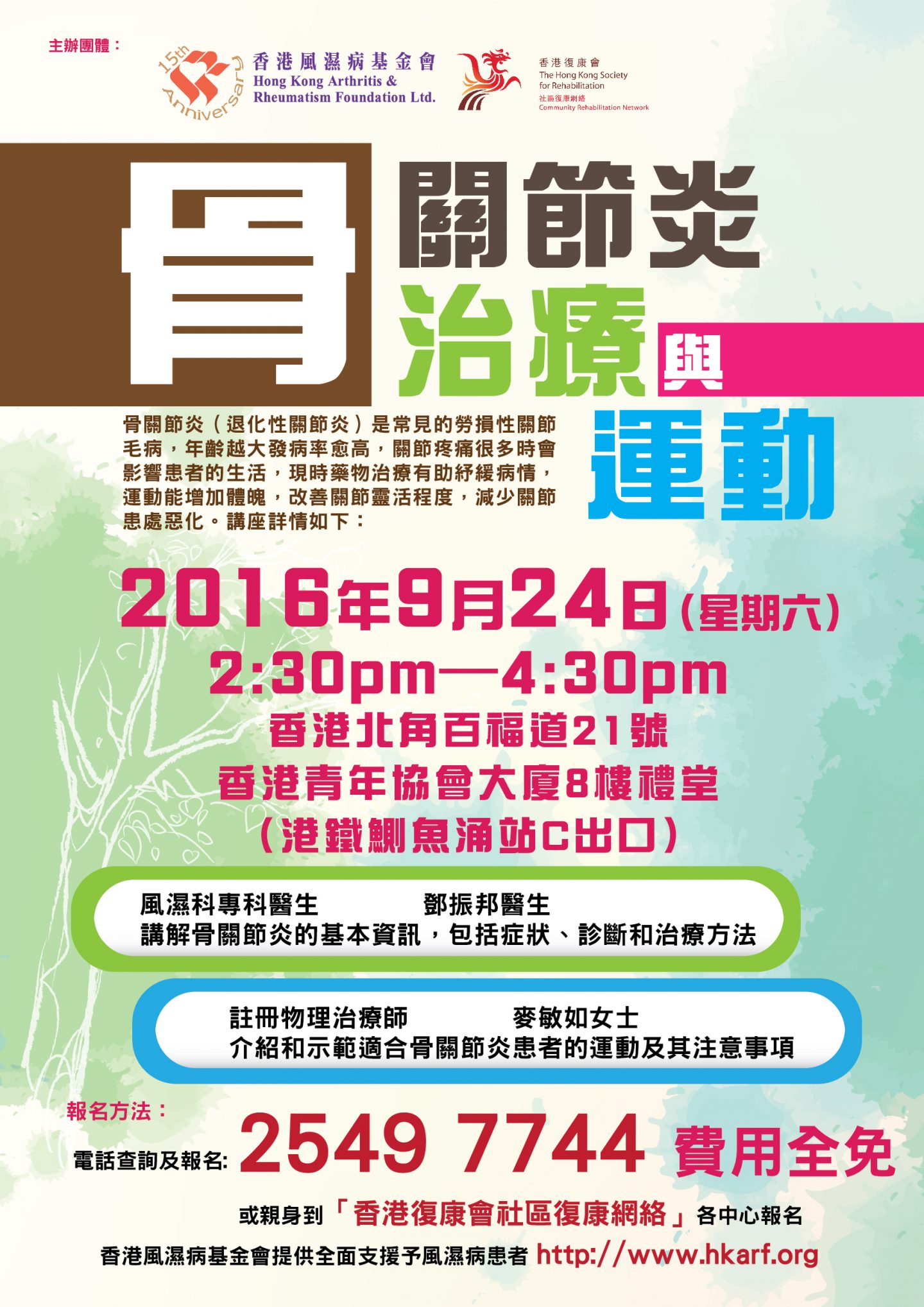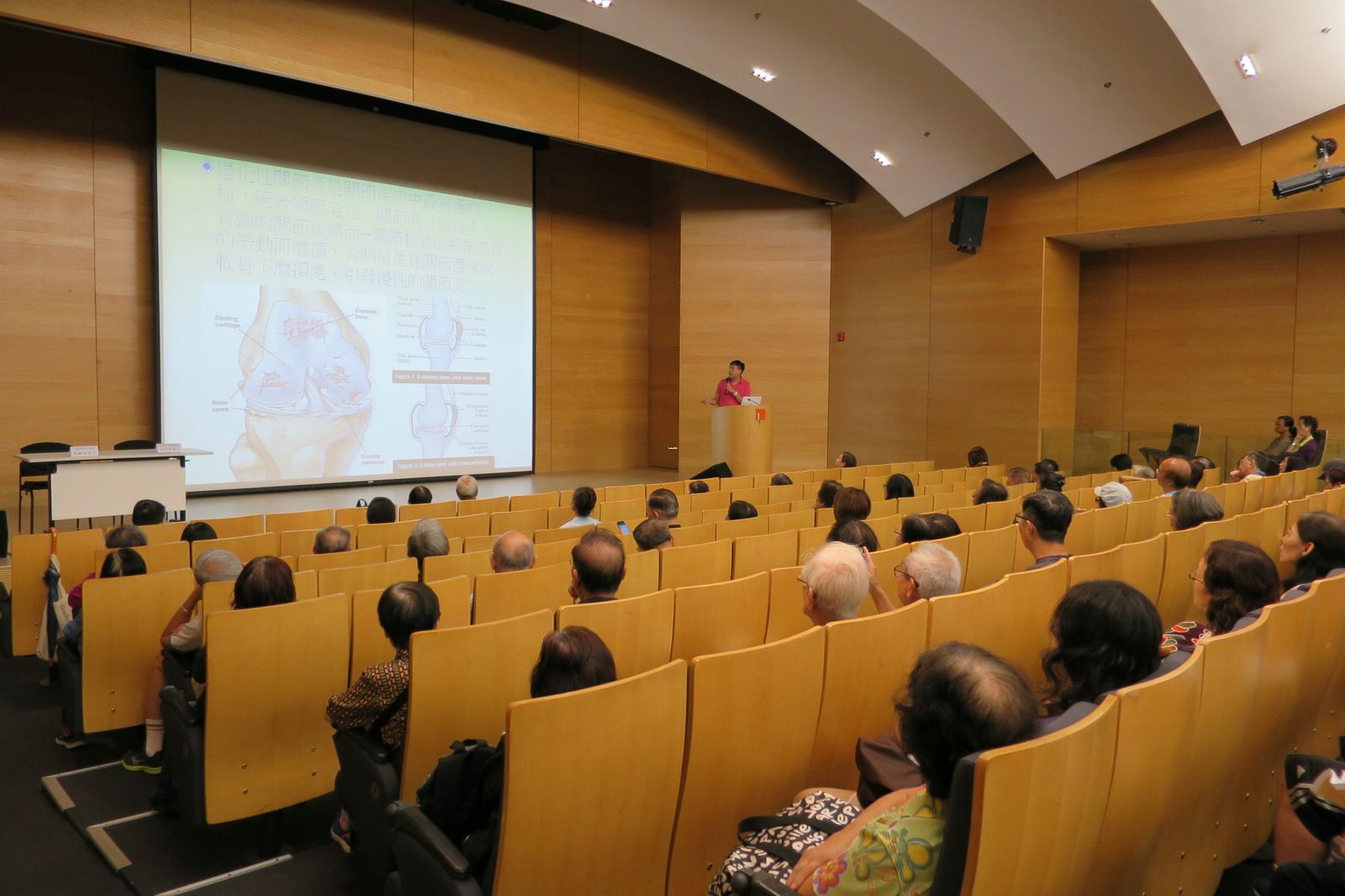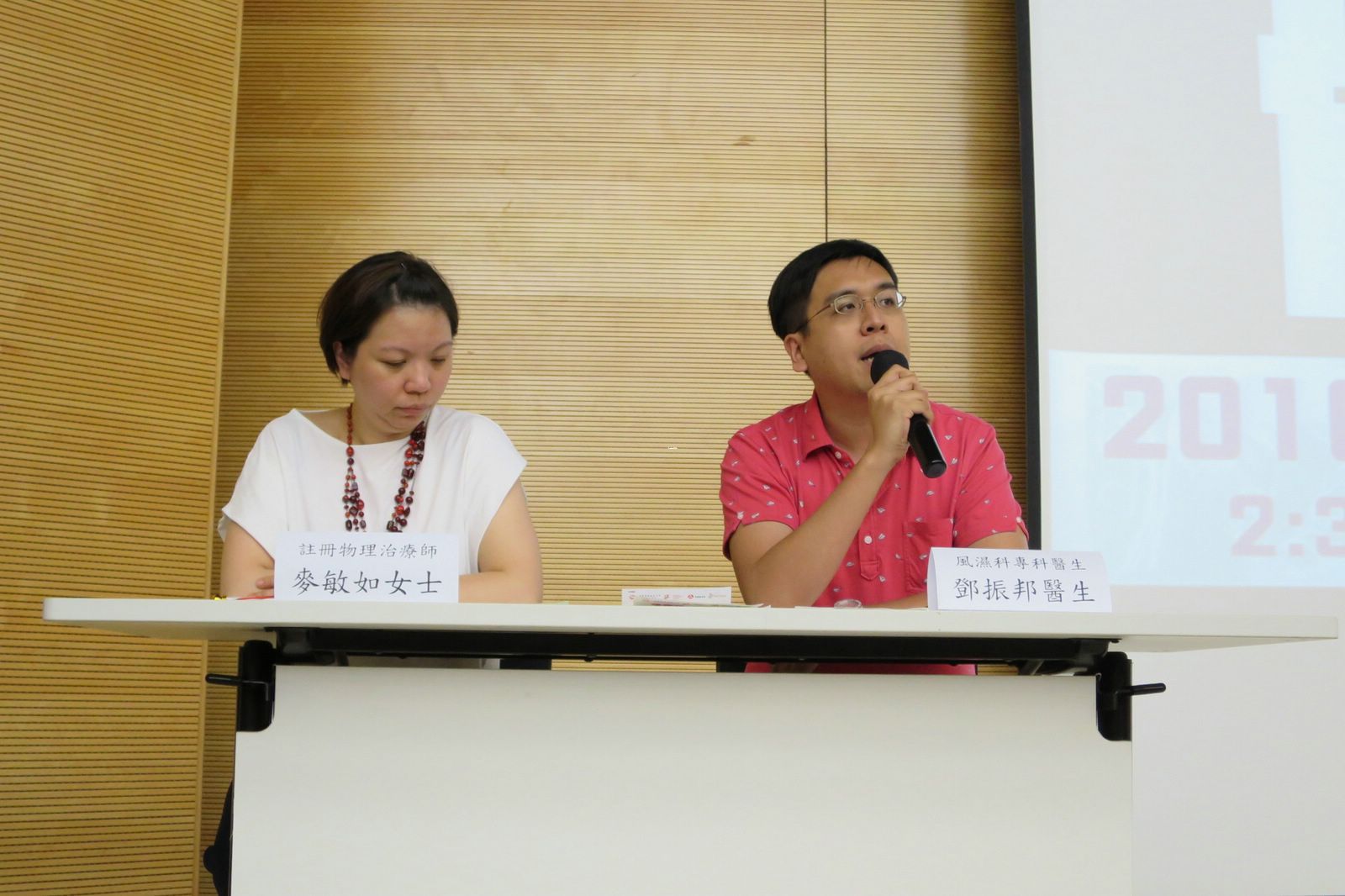
Seasonal Talk – OA Treatment & Exercise
24th September 2016
Seasonal Talk – OA Treatment & Exercise was taken part in Auditorium, The Hong Kong Federation of Youth Groups Building, North Point on 24th September 2016. The talk aimed to enhance people’s understanding on the treatment and suitable physical exercises for patients with osteoarthritis (OA). There were 135 participants in total.
The talk was started by Dr. Ricky TANG, a specialist in Rheumatology, to explain the causes and symptoms of OA. Due to ageing, the secretion of synovial fluid was decreased. Also, the frequent movement in joints promoted the wear and tear of cartilage which might further cause inflammation of joints and formation of spur. Efficiency of treatment would be higher if proper intervention was given at the very beginning of onset. Thus, Dr. TANG urged patients to seek medical advice as soon as possible. He illustrated the purpose and function of different treatment methods. Many were afraid of taking medications and injection. They had various doubts on using what kind of methods to cure the disease. Dr. TANG explained it highly depended on the expectation of patients. If patients hoped to relieve the pain immediately, they could take the anti-inflammatory painkillers. Yet, taking drugs continuously for a long period might affect the function of liver and kidney. Patients could consider other means like injection and joint replacement surgery to alleviate the pain.
Apart from this, the talk was continued by Ms. Mandy MAK, a registered physiotherapist, to share her experiences in how to kill pain. She first asked the participants what was pain. This unpleasant feeling was composed of one’s emotion, past experience, condition of body as well as influence from others. Medication could help in relieving the pain but many overlooked the important role of their own thoughts and emotions in treatment process. Being positive and understanding others’ viewpoints on the disease could also reduce the uncomfortable feeling of the body. Moreover, most people misunderstood the correct procedure of applying ice compression. Ms. MAK explained it clearly and emphasized that patients should feel slightly pain and paralysis at the affected part. If not, it could not promote the contraction and relaxation of blood vessel repeatedly as improving blood circulation could relieve pain and inflammation. Lastly, Ms. MAK demonstrated some simple massage skills and stretching exercises. She shared her experiences in taking care of patients in the hope of encouraging participants to face their illness positively.
Most participants were satisfied with the arrangement and content of the talk. They were interested in the detailed explanation and demonstration especially the treatments and hoped to participate to similar activities in the future.








